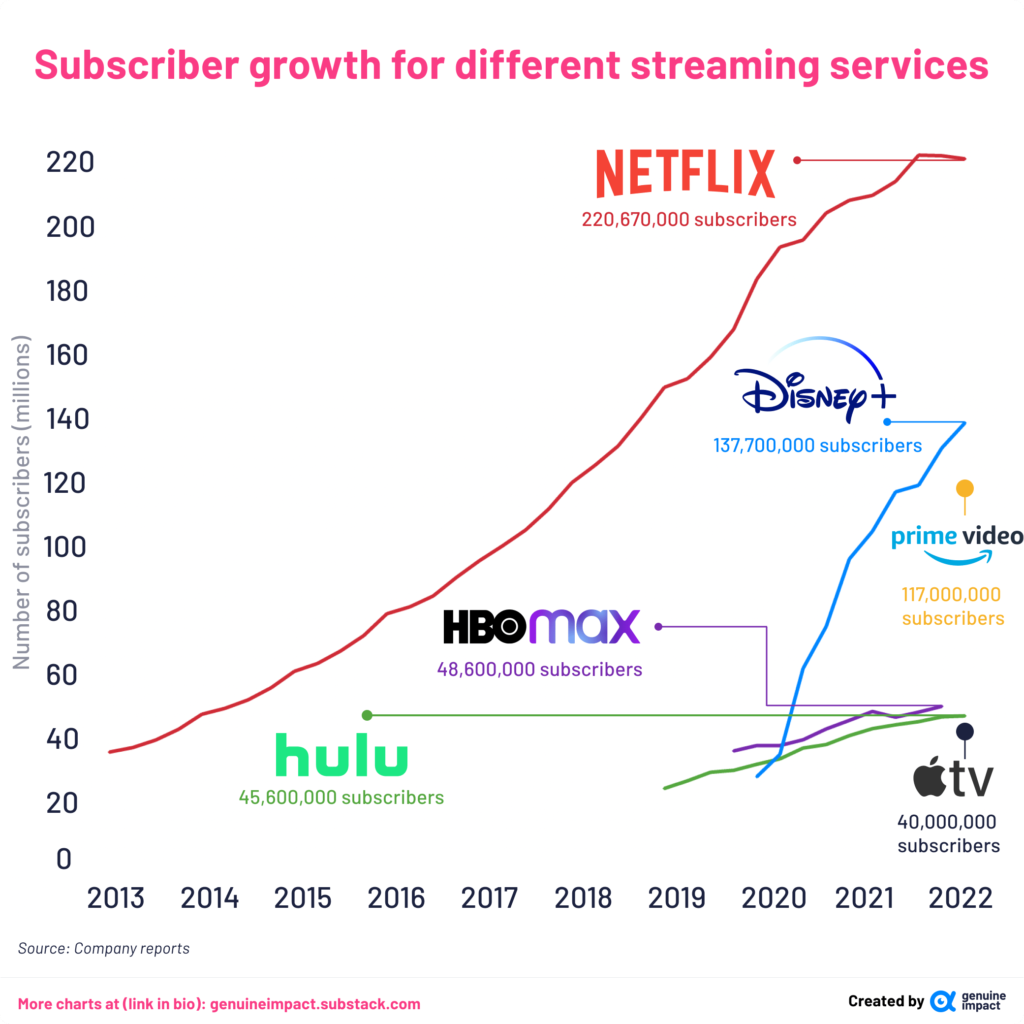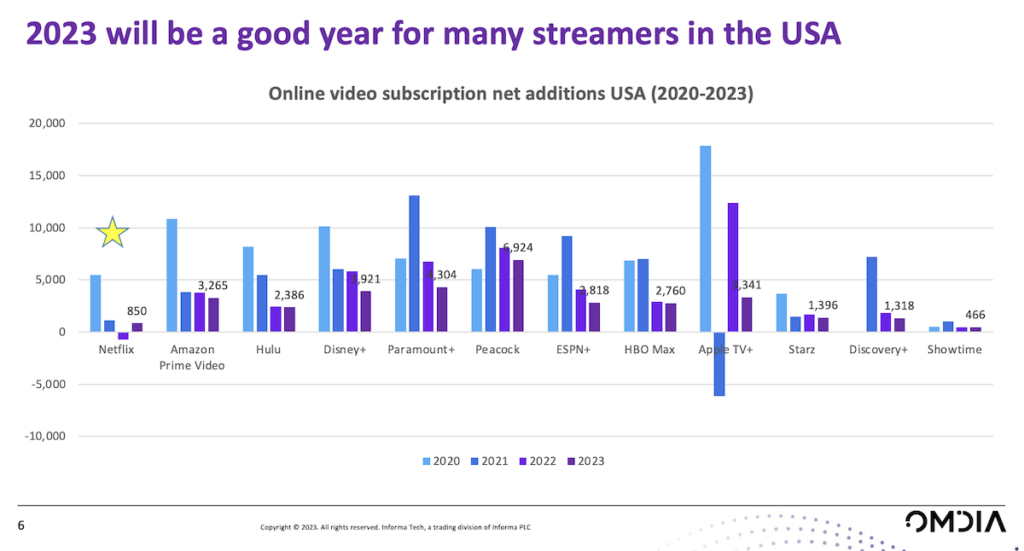Are you curious about the impact of exclusive content on subscriber growth? In today’s digital age, companies are constantly vying for consumers’ attention, and one effective strategy being implemented is the creation of exclusive content. Whether it’s in the form of limited-time offers, access to premium content, or member-only perks, providing exclusive content has proven to be a powerful tool in attracting and retaining subscribers. By offering something unique and valuable, companies can build a loyal and engaged customer base, ultimately leading to significant growth in their subscriber numbers. Stay tuned as we explore the fascinating world of exclusive content and its undeniable effect on subscriber growth.
What is Exclusive Content?
Definition of exclusive content
Exclusive content refers to unique and specialized material that is only accessible to a specific group of individuals, typically subscribers or members. It offers added value and serves as an incentive for people to engage with a particular brand, platform, or service. Exclusive content can come in various forms, such as behind-the-scenes footage, bonus interviews, early access to content, exclusive merchandise, and interactive experiences.
Examples of exclusive content
To better understand the concept of exclusive content, let’s explore some examples:
-
Behind-the-scenes footage: Movie studios often release exclusive footage showing the making of a film, providing fans with a glimpse into the creative process and the opportunity to see their favorite actors and directors in action.
-
Bonus interviews and features: Music artists may offer exclusive interviews or bonus tracks for their die-hard fans, giving them an exclusive insight into their work and connecting on a deeper level.
-
Early access to content: Streaming platforms like Netflix and Disney+ may offer exclusive access to certain TV shows or films before they are available to the general public. This creates a sense of excitement and exclusivity among subscribers.
-
Exclusive merchandise and discounts: Brands may offer limited-edition merchandise or exclusive discounts to their loyal customers, making them feel valued and appreciated.
-
Interactive content: Gaming companies often provide exclusive in-game content or special events for their most dedicated players, rewarding their loyalty and encouraging them to continue engaging with the game.
These examples demonstrate the diverse range of exclusive content and how it can be tailored to fit different industries and target audiences.
Importance and Benefits of Exclusive Content
Increased subscriber engagement
One of the primary benefits of exclusive content is the increased engagement it generates from subscribers. By offering unique and valuable material, brands can capture and maintain the attention of their audience. Exclusive content serves as an incentive for subscribers to actively participate and interact with a brand, whether it’s by watching behind-the-scenes footage, participating in interactive experiences, or accessing early content releases. This heightened engagement fosters a sense of community and cultivates a deeper connection between subscribers and the brand.
Enhanced customer loyalty
Exclusive content plays a vital role in fostering customer loyalty. When subscribers have access to exclusive material, they feel valued and recognized by the brand. This sense of exclusivity creates an emotional bond between the subscriber and the brand, increasing the likelihood of continued support and loyalty. By continually delivering high-quality exclusive content, brands can strengthen relationships with their audience and build a base of loyal customers who are more likely to advocate for the brand and recommend it to others.
Higher subscriber retention
With the abundance of content available today, retaining subscribers can be quite challenging. However, exclusive content serves as a powerful tool for retaining subscribers over the long term. By providing unique material that cannot be found elsewhere, brands create a sense of exclusivity and a unique selling proposition that differentiates them from their competitors. Subscribers are less likely to cancel their subscriptions if they feel they would be missing out on valuable and exclusive content by doing so.
Increased word-of-mouth referrals
One of the significant benefits of exclusive content is its potential to drive positive word-of-mouth referrals. When subscribers have access to exclusive material that is not available to non-subscribers, they are more likely to share their excitement and experiences with others. These personal recommendations from satisfied subscribers can significantly impact a brand’s growth and acquisition of new subscribers. The exclusivity and value associated with the content create a sense of intrigue and curiosity among non-subscribers, prompting them to consider becoming part of the exclusive community.

This image is property of cdn.statcdn.com.
Types of Exclusive Content
Behind-the-scenes footage
Behind-the-scenes footage provides subscribers with a unique glimpse into the creation and production process of a film, TV show, or other creative projects. This type of exclusive content allows subscribers to feel closer to their favorite actors, artists, and directors, enhancing their overall experience and satisfaction. By going behind the scenes, subscribers gain a deeper understanding of the creative process and the effort involved in bringing their favorite content to life.
Bonus interviews and features
Bonus interviews and features give subscribers exclusive access to in-depth conversations with artists, creators, and industry experts. These interviews can delve into topics that may not be covered in mainstream media, offering valuable insights and personal stories. By providing this exclusive content, brands allow subscribers to connect with their favorite personalities on a deeper level and gain a deeper appreciation for the work and artistry involved.
Early access to content
Offering subscribers early access to content is a powerful way to create a sense of anticipation, reward loyalty, and drive engagement. Whether it’s a highly-anticipated film, a new episode of a TV show, or a product release, granting subscribers exclusive access before the general public generates excitement and a feeling of being part of an exclusive club. This type of exclusive content can help drive subscriber growth as individuals are motivated to sign up to ensure they don’t miss out on time-sensitive offerings.
Exclusive merchandise and discounts
Exclusive merchandise and discounts are another effective form of exclusive content. By offering limited-edition merchandise or special discounts only available to subscribers, brands create a sense of exclusivity and reward loyal customers. This can encourage subscribers to continue their engagement and even become brand advocates, spreading the word about the exclusive benefits they receive.
Interactive content
Interactive content allows subscribers to actively engage with the brand and become part of the experience. This can include things like interactive games, virtual reality experiences, or interactive live events. By providing interactive exclusive content, brands can foster a deeper connection with their subscribers and create memorable experiences that keep them engaged and excited about the brand.
Overall, the types of exclusive content available are diverse and can be tailored to fit the brand’s industry, target audience, and objectives. The key is to offer content that adds value, intrigue, and a sense of exclusivity to subscribers’ experience.
Creating Effective Exclusive Content Strategies
Understanding target audience needs and preferences
When developing exclusive content strategies, it is essential to have a thorough understanding of the target audience’s needs, preferences, and interests. Conducting market research, utilizing analytics, and engaging in dialogue with subscribers can provide valuable insights into the type of content that would resonate with them the most. By aligning exclusive content offerings with the desires of the target audience, brands can maximize engagement and subscriber growth.
Defining goals and objectives
Before implementing exclusive content strategies, brands should clearly define their goals and objectives. Are they aiming to increase subscriber engagement? Enhance customer loyalty? Drive subscriber retention? Defining these goals helps guide the content creation process and ensures that the exclusivity of the content aligns with the desired outcomes. Each piece of exclusive content should have a purpose and tie back to these overarching objectives.
Identifying unique selling points
To stand out in a crowded market, it is crucial to identify the unique selling points that make the exclusive content offering compelling and distinct. What sets this content apart from what is available elsewhere? Whether it’s access to renowned experts, exclusive partnerships, or one-of-a-kind experiences, brands should leverage their unique advantages to create content that cannot be replicated by others.
Developing a content calendar
A content calendar is an essential tool for planning and organizing exclusive content releases. This calendar should outline the schedule for each piece of exclusive content, including release dates, promotion strategies, and any supplementary materials. By having a well-structured content calendar, brands can maintain consistency, manage resources effectively, and build anticipation among subscribers.
Collaborating with influencers and industry experts
To expand the reach and impact of exclusive content, brands can collaborate with influencers and industry experts. These collaborations can involve guest appearances, co-creation of content, or partnerships for exclusive offerings. By leveraging the reach and credibility of influencers, brands can tap into their audience and attract new subscribers who are interested in the exclusive content. This strategy can increase subscriber growth and broaden the brand’s visibility in the market.
By following these strategies, brands can create effective exclusive content strategies that are tailored to their target audience, goals, and unique selling points.

This image is property of i.redd.it.
Measuring the Impact of Exclusive Content on Subscriber Growth
Monitoring subscriber growth over time
One of the primary ways to measure the impact of exclusive content on subscriber growth is through monitoring the number of subscribers over time. By tracking the growth rate and analyzing trends, brands can determine if the exclusive content strategy has been successful in attracting and retaining subscribers. Monitoring subscriber growth provides valuable insights into the effectiveness of the content offerings and can help identify areas for improvement or adjustments.
Analyzing subscriber engagement metrics
Engagement metrics provide valuable insights into the level of interaction and interest subscribers have with the exclusive content. Metrics such as likes, shares, comments, and views can indicate the resonance and impact of the content with the target audience. By analyzing these engagement metrics, brands can understand which types of exclusive content are most effective at capturing their subscribers’ attention and driving interaction.
Conducting surveys and feedback analysis
Collecting feedback from subscribers through surveys or direct communication is an effective way to gather insights and measure the impact of exclusive content on subscriber growth. Surveys can ask questions related to subscriber satisfaction, the value they perceive from the exclusive content, and the impact it has had on their decision to subscribe or remain subscribed. By analyzing this feedback, brands can gain a better understanding of the overall impact of the exclusive content strategy and make data-driven decisions for future content offerings.
Tracking referral sources
Another way to measure the impact of exclusive content on subscriber growth is by tracking the sources of new subscribers. When new subscribers are acquired through word-of-mouth referrals or recommendations from existing subscribers, it indicates the positive influence of the exclusive content. Tracking referral sources can provide valuable insights into the reach and impact of the content, as well as help identify advocates who can further promote the brand and its exclusive offerings.
By leveraging these measurement strategies, brands can gain a comprehensive understanding of the impact of exclusive content on subscriber growth and make informed decisions to optimize future strategies.
Case Studies: Successful Implementation of Exclusive Content
Netflix: Original series and exclusive films
Netflix is a pioneer in offering exclusive content, particularly through its original series and exclusive films. By producing high-quality content that is only available on their platform, Netflix has attracted millions of subscribers worldwide. Their hit series such as “Stranger Things” and “The Crown” have become cultural phenomenons, driving subscriber growth and retention. Through their commitment to producing exclusive content, Netflix has become a dominant player in the streaming industry.
Patreon: Exclusive artist content
Patreon is a platform that allows artists, musicians, and content creators to offer exclusive content to their subscribers, known as patrons. Through this subscription-based model, creators can provide behind-the-scenes access, exclusive merchandise, early releases, and other valuable content directly to their most dedicated fans. By providing unique benefits to their patrons, Patreon has enabled countless creators to monetize their work and foster a strong sense of community with their subscribers.
The New York Times: Subscriber-only articles
The New York Times implemented a paywall system that offers exclusive content to their subscribers through subscriber-only articles. While they still provide some articles for free, a significant portion of their content is exclusive to subscribers. This approach has enabled The New York Times to increase their digital subscriptions significantly. Their exclusive content includes in-depth investigative reports, interviews with prominent figures, and expert analysis that is highly valued by their subscribers.
These case studies demonstrate the effectiveness of offering exclusive content and its impact on subscriber growth within different industries. By tailoring content to the target audience’s interests and leveraging the power of exclusivity, brands can achieve remarkable success in attracting and retaining subscribers.
This image is property of i.insider.com.
Challenges and Potential Risks of Exclusive Content
Potential alienation of non-subscribers
While exclusive content can be a powerful tool for subscriber growth, it also has the potential to alienate non-subscribers. If non-subscribers perceive that they are missing out on valuable content or feel excluded from the community, it may deter them from considering a subscription. Brands must strike a balance between creating exclusive content and ensuring that non-subscribers still have access to compelling and valuable material. This can be achieved by providing a mix of exclusive and non-exclusive content to cater to both subscriber and non-subscriber audiences.
Managing content production costs
Creating exclusive content can involve significant investments in terms of production costs. Brands must carefully manage these costs to ensure that the content remains financially viable and sustainable. This may involve optimizing production processes, leveraging technology and automation, and exploring partnerships or collaborations to share resources and mitigate expenses. By effectively managing content production costs, brands can continue providing high-quality exclusive content without compromising their financial stability.
Balancing exclusivity and accessibility
Finding the right balance between exclusivity and accessibility can be a challenge when developing and implementing exclusive content strategies. While the aim is to create content that is exclusive to subscribers, it is essential to ensure that it remains accessible and valuable to them. Brands should consider factors such as the frequency of content releases, the ease of access to exclusive material, and the level of interaction required from subscribers. Balancing exclusivity and accessibility allows brands to provide a unique experience while still meeting the expectations and needs of their subscribers.
By addressing these challenges and risks proactively, brands can optimize their exclusive content strategies and minimize potential obstacles to subscriber growth.
Strategies for Promoting Exclusive Content
Utilizing social media platforms
Social media platforms provide a powerful avenue for promoting exclusive content to a wide audience. Brands can leverage platforms like Facebook, Instagram, Twitter, and YouTube to create buzz around their exclusive offerings. By sharing teasers, behind-the-scenes footage, and exclusive interviews, brands can generate excitement and encourage non-subscribers to consider subscribing to gain access to the exclusive content. Social media platforms also allow for direct communication with the audience, enabling brands to respond to inquiries, address concerns, and build relationships with subscribers.
Email marketing and newsletters
Utilizing email marketing and newsletters is an effective way to promote exclusive content directly to subscribers. By leveraging their email list, brands can send personalized messages highlighting the exclusive content offerings and the value subscribers can expect. Newsletters can provide updates, sneak peeks, and exclusive offers that further incentivize subscribers to engage with the brand and its exclusive content. By utilizing email marketing, brands can establish a direct line of communication with their subscribers and build anticipation for upcoming exclusive content releases.
Leveraging partnerships and collaborations
Partnerships and collaborations with influencers, other brands, or industry experts can significantly amplify the reach and promotion of exclusive content. By collaborating with individuals or organizations that have a strong following or expertise in a particular field, brands can tap into their audience and generate interest in the exclusive offerings. Collaborators can promote the exclusive content to their own followers, either through dedicated content or joint marketing campaigns. These partnerships not only expand the reach but also lend credibility and authority to the exclusive content.
Offering limited-time promotions
Offering limited-time promotions creates a sense of urgency and exclusivity among subscribers. Brands can provide time-limited offers, discounts, or access to exclusive content for a limited period. By doing so, they create a sense of FOMO (Fear of Missing Out) among subscribers, motivating them to take action and engage with the content. The limited-time aspect of these promotions encourages subscribers to stay active, check for updates regularly, and remain engaged with the brand and its offerings.
By implementing these strategies, brands can effectively promote their exclusive content and maximize the potential for subscriber growth.

This image is property of tbivision.com.
Best Practices for Engaging Subscribers with Exclusive Content
Regularly updating and refreshing content
To keep subscribers engaged and excited, it is crucial to regularly update and refresh the exclusive content offerings. Brands should strive to provide a steady stream of new and valuable material to maintain subscribers’ interest. This can include releasing new episodes, offering exclusive interviews or features, and introducing special events or interactive content. By consistently delivering fresh and engaging content, brands can keep subscribers coming back for more and build long-term loyalty.
Encouraging subscriber feedback and interaction
A great way to engage subscribers and foster a sense of community is by encouraging their feedback and interaction. Brands can utilize comment sections, surveys, or social media polls to gather input from subscribers regarding their preferences, opinions, and suggestions. This not only allows subscribers to feel heard and valued but also provides brands with valuable insights to improve their exclusive content offerings. By incorporating subscriber feedback into the content creation process, brands can enhance the overall subscriber experience and foster a sense of co-creation.
Personalizing content recommendations
Personalization is key to engaging subscribers with exclusive content. Brands can use subscriber data, such as viewing habits, preferences, and demographic information, to deliver personalized content recommendations. By tailoring the content to individual subscribers’ interests and preferences, brands can ensure that the exclusive material resonates with each subscriber and increases their engagement. Personalization can be achieved through algorithms, user profiles, or interactive features that allow subscribers to provide input on their preferences.
Delivering content across multiple platforms and devices
In today’s digital landscape, subscribers consume content across various platforms and devices. To engage subscribers effectively, brands must ensure that their exclusive content is accessible and optimized for a seamless viewing experience across multiple platforms and devices. Whether it’s desktop, mobile, or connected TV, subscribers should be able to access the exclusive content easily, regardless of their preferred platform. By providing this flexibility, brands can meet the expectations of subscribers and cater to their diverse needs.
By following these best practices, brands can create engaging and valuable exclusive content experiences that keep subscribers actively engaged and excited about the brand.
Conclusion
The power of exclusive content in driving subscriber growth cannot be understated. By offering unique and valuable material, brands can increase subscriber engagement, enhance customer loyalty, improve subscriber retention, and generate word-of-mouth referrals. Whether it’s through behind-the-scenes footage, bonus interviews, early access to content, exclusive merchandise, or interactive experiences, exclusive content has the potential to create a deep sense of connection and exclusivity between subscribers and a brand.
To effectively harness the benefits of exclusive content, brands must understand their target audience’s needs and preferences, define clear goals and objectives, and identify unique selling points. The development of a content calendar, collaborations with influencers and industry experts, and the measurement of impact through subscriber growth monitoring, engagement metrics analysis, surveys, and tracking referral sources are crucial steps in implementing an effective exclusive content strategy.
Success stories from companies like Netflix, Patreon, and The New York Times demonstrate the positive impact of exclusive content on subscriber growth. However, challenges and potential risks, such as potential alienation of non-subscribers and managing content production costs, must be addressed, and a balance between exclusivity and accessibility must be struck.
Promoting exclusive content through social media platforms, email marketing, partnerships, collaborations, and limited-time promotions presents opportunities for brands to reach a wider audience and incentivize subscriber engagement. Best practices, such as regularly updating and refreshing content, encouraging subscriber feedback, personalizing content recommendations, and delivering content across multiple platforms and devices, are essential for engaging subscribers effectively.
In conclusion, exclusive content is a powerful tool for driving subscriber growth when implemented strategically. By understanding the significance and benefits of exclusive content, as well as following best practices, brands can leverage this valuable resource to cultivate strong subscriber relationships, increase brand visibility, and ultimately drive growth.

This image is property of techcrunch.com.


